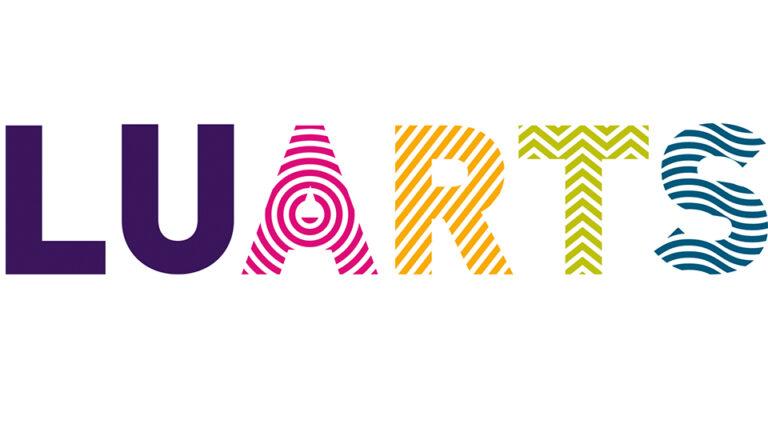Qualification: PhD
Department: School of Physics and Astronomy
Application deadline: 6 May 2022
Start date: 26 September 2022
Overview
Supervisor
Project highlights
- Work on the cutting edge of miniaturised space missions for observing the Earth’s atmosphere for climate and air quality.
- Collaborate with a world leading space company, Thales Alenia Space.
- Develop skills in hardware development and data processing.
- Work at a brand new world-class facility, Space Park Leicester, and utilise new optical laboratory facilities at the company.
Eligibility
UK (Home) applicants only.
We are particularly keen to see applications from professionals in industry who are interested to develop their research and engineering skills.
We are open to a wide variety of backgrounds in physical sciences, engineering and computing. As the PhD is multi-disciplinary, we expect applicants would have at least one relevant strength area (e.g. sensors, optical engineering, instrumentation design, computation, physics-based modelling), and be keen to broaden themselves to develop new skills.
Entry requirements
UK Bachelor’s Degree in physical or mathematical sciences or engineering with at least 2:1 (or overseas equivalent).
University of Leicester English language requirements apply (where applicable).
Informal enquiries
Project enquiries
- Dr Joshua Vande Hey (jvh7@leicester.ac.uk)
Application enquiries
- PGR Admissions (pgradmissions@leicester.ac.uk)
Overview
Aerosols, tiny particles in the atmosphere, impact our climate [1] and our health [2] through several pathways. These pathways include direct radiative forcing (cooling through scattering of incoming solar radiation or heating through trapping of outgoing infrared radiation), indirect radiative forcing (influencing cloud properties), and adversely effecting human health through inhalation. There are large uncertainties on our understanding of type and extent of atmospheric aerosol globally, and more data are needed and constellations of satellites with miniaturised aerosol instruments can complement larger missions by bringing higher resolution and greater coverage accessible through New Space platforms. Miniaturisation is an important effort across Earth observation technology development [3].
Thales Alenia Space UK Ltd (TAS-UK) and University of Leicester have a long track record of collaboration on space technology development, for example in concepts for new miniature air quality instruments [4].
This PhD will apply a combined instrumentation and data processing development approach to underpin optimisation of the TAS-UK Multi-Angle Polarimeter (MAP) instrument [5] for miniaturised aerosol-focused missions.
Methodology
The research will be conducted through two parallel work streams.
First, the PhD will build upon hardware development of the MAP instrument, investigating hardware approaches for further reducing size, mass and cost of the instrument and the impacts these have on instrument performance characteristics. Optical configurations, alternative sensor selection, and multi-angle viewing methods will be investigated through in-depth trade-off analysis, evaluated through modelling of the signals anticipated from these configurations. The research will lead toward a detailed instrument specification and tolerance assessment for at least one proposed compact space platform.
In parallel, the PhD will apply physics based modelling of atmospheric aerosol interactions with light coupled with sensor performance characteristics of a spectrally, polarisation, and viewing-angle resolved instrument at different specification levels to understand what aerosol data products are possible from what instrument and constellation specifications. The emphasis will be on observations related to surface fine particulate matter PM2.5 speciation and quantification and how New Space approaches can complement upcoming health-focused missions such as MAIA [6]. The project will involve understanding data requirements for climate monitoring, public health, health research and regulatory applications [7], modelling the performance of different sensor and constellation specifications, and establishing requirements for a PM2.5 and health EO mission based around a compact multi-angle spectropolarimeter.
Training and skills
- You will develop knowledge at the interface between sensor hardware development and satellite signal processing / information extraction while developing domain knowledge of atmospheric radiative transfer.
- You will spend time in a leading space company through a placement.
- You will receive training and develop skills in instrument modelling and atmospheric retrievals.
- You will develop skills in linking satellite data user requirements through to instrument design requirements.
Partners and collaboration
Thales-Alenia Space UK, Ltd., will act as CASE partner and provide expert supervision and on satellite instrumentation development and access to state-of-the-art optical laboratory facilities.
References
- Myhre, G., Myhre, C. E.L., Samset, B. H. & Storelvmo, T., Aerosols and their Relation to Global Climate and Climate Sensitivity. Nature Education Knowledge 4(5):7, 2013
- Schwartz, J., Dockery, D.W., & Neas, L. M., Is Daily Mortality Associated Specifically with Fine Particles?, Journal of the Air & Waste Management Association, 46:10, 927-939, DOI: 10.1080/10473289.1996.10467528, 1996
- Higgons, R., New miniaturized remote sensing instruments, SPIE News, 2021
- Ruiz Villena, C., Anand, J. S., Leigh, R. J., Monks, P. S., Parfitt, C. E., and Vande Hey, J. D.: Discrete-wavelength DOAS NO2 slant column retrievals from OMI and TROPOMI, Atmos. Meas. Tech., 13, 1735–1756, https://doi.org/10.5194/amt-13-1735-2020, 2020
- Spilling, D., Walker, A.: The Multi Angle Polarimeter (MAP) on board ESA’s Copernicus Carbon Dioxide Monitoring mission (CO2M), Proceedings of SPIE – The International Society for Optical Engineering, 11852, art. no. 118520R, DOI: 10.1117/12.2599174, 2021.
- Diner, D. J., Boland, S. W., Brauer, M., Bruegge, C., Burke, K. A., Chipman, R., Di Girolamo, L., Garay, M. J., Hasheminassab, S., Hyer, E., Jerrett, M., Jovanovic, V., Kalashnikova, O. V., Liu, Y., Lyapustin, A. I., Martin, R. V., Nastan, A., Ostro, B. D., Ritz, B., Schwartz, J., Wang, J., and Xu, F.: Advances in multiangle satellite remote sensing of speciated airborne particulate matter and association with adverse health effects: from MISR to MAIA, J. Appl. Remote Sens, 12, 042603, https://doi.org/10.1117/1.JRS.12.042603, 2018
- Potts, D.A.; Ferranti, E.J.S.; Timmis, R.; Brown, A.S.; Vande Hey, J.D. Satellite Data Applications for Site-Specific Air Quality Regulation in the UK: Pilot Study and Prospects. Atmosphere, 12, 1659. https://doi.org/10.3390/atmos12121659, 2021




